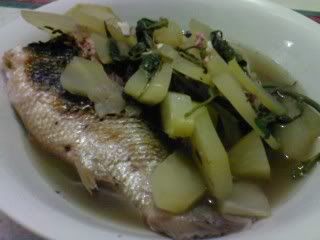If you have noticed, I have a new design. For this, I thank Wilson, my techie friend.
It was Wilson who introduced me to blogging… err… it was blogging that introduced me to Wilson. Oh well. Whichever way – either the chicken or the egg came first – doesn’t change the fact that Wilson is certainly the guy behind the creation of this blogsite.
If not for Wilson, I wouldn’t be here blogging my blues and thoughts away and sharing/exchanging comments with my readers out there. If not for him, I wouldn’t have met new friends online and offline, nor discovered more things I thought I knew but did not in fact know about.
Who would think that a techno-challenged mom like me who knew nothing more than sending and retrieving emails in the internet would someday be a blogging mom? Cool. Yeah. My kids initially showed repulsion about my getting into blogging. But to my amusement – they even now suggest topics for me to blog about. And I think they also love it when I feature them in my posts. Hehe.
So for all the joys that blogging has brought me, and for this new design, maraming salamat, Wilson!
(Note: Wilson Chua is the president of Bitstop Inc. a company based in Dagupan City which provides various computer technology services in Pangasinan and other parts of the country and has been operating since 1989, making it one of the pioneer companies providing such services in this city.)
Now, on to a gastronomic topic.
My favorite native veggie dish:
Here is my favorite native veggie dish.

The way it’s cooked, I should say – is very Ilocano. Very Ilocano in the sense that it’s not sauteed. You see, genuine Ilocanos never sautee or stir fry their vegetables. They just bring water to a boil, dump all the ingredients at the same time in the pot then let it simmer till everything is perfectly done.
I can hardly speak Ilocano. Basit laeng (just a little). But my maternal grandmother was a pure Ilocana. It was probably from her that I got my Ilocano taste.
I believe that when it comes to food, Filipinos have varied preferences. I call it the “regional taste” which is much like the regional differences amongst us Pinoys who are spread in all the 7,100 islands of our glorious country. For instance, the Pampangos and Tagalogs prefer their vegetable dishes sauteed in little oil or butter. Only few of them can probably appreciate an Ilocano vegetable dish that is simply boiled and seasoned with salt or bagoong.
The veggie dish you see above (called “dinengdeng” in Ilocano dialect) was cooked by my husband. There, I admitted it. LOL! Let’s just say that I can’t eat what I cook. I guess this is a common phenomenon. Thus, one time when I suddenly had a craving for this particular vegetable dish, I requested my hubby to cook.
So, do you want to know how he prepared it? Here’s how:
GREEN PAPAYA WITH CAMOTE TOPS AND BROILED FISH
INGREDIENTS:
medium sized green papaya
bunch of camote tops
broiled bangus or any fish
ginger
garlic
bagoong sauce or patis or salt (bagoong tastes much better)
PROCEDURE:
Peel the papaya and slice thinly. Crush the garlic cloves and slice the ginger thinly.
In an earthen pot or aluminum cooking pot, place around 3 and 1/2 cups of water. Add the garlic and ginger. Bring to a boil. Add about 3 tablespoons of bagoong sauce, depending on your taste. Add the broiled bangus or fish. Simmer. Add the sliced green papaya. Cook until crisp tender. Add the camote tops. Simmer. Serve hot.
You can also vary this recipe by adding camote fruit, which will pleasantly make it a complete meal of carbohydrates, vitamins and minerals and protein. Then you don’t need to eat rice anymore, which is perfect for those who want to lessen their carbo intake.